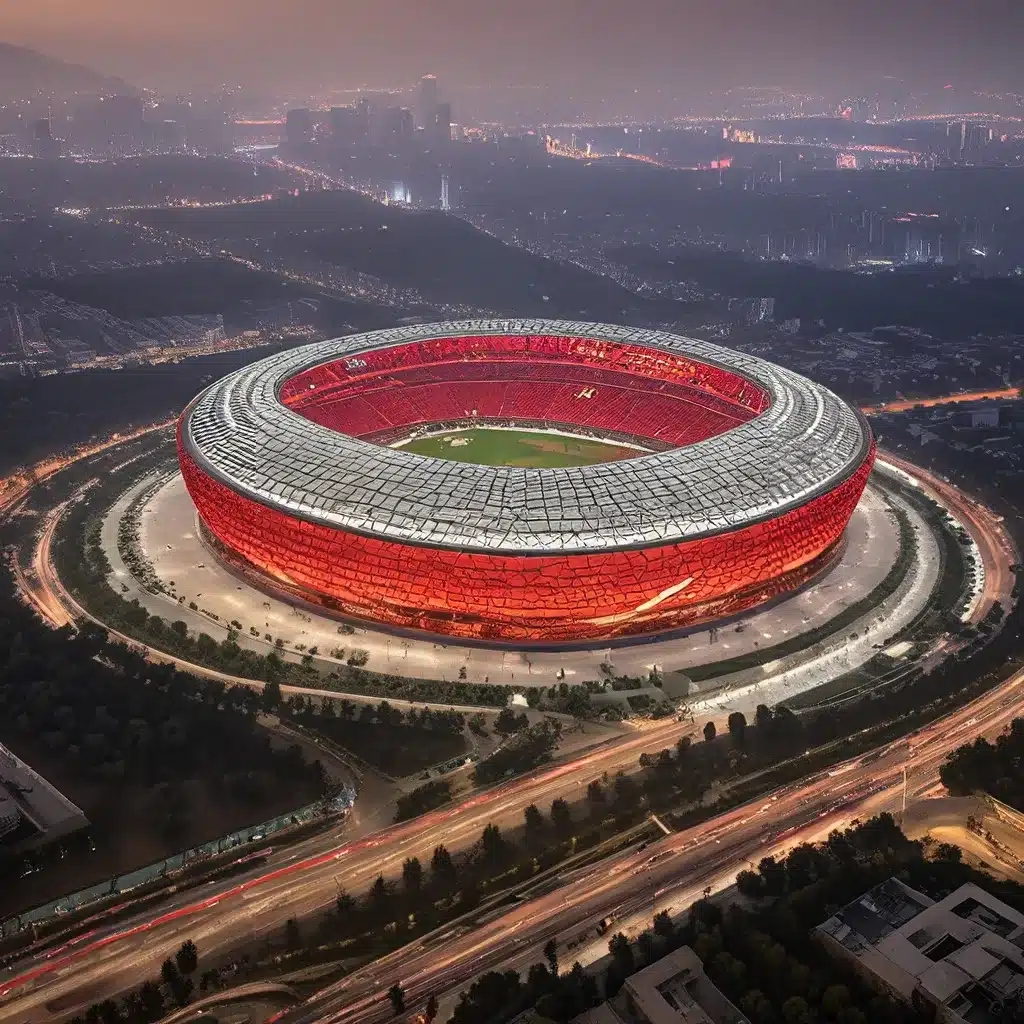
The Beijing National Stadium, also known as the “Bird’s Nest,” is an iconic architectural marvel that has become a symbol of China’s rise on the global stage. Designed by the Swiss architecture firm Herzog & de Meuron, the stadium’s unique and striking appearance has made it one of the most recognizable sports venues in the world.
The Birth of a Landmark
The decision to host the 2008 Summer Olympics in Beijing was a pivotal moment for China, as it represented the country’s emergence as a global superpower. In the lead-up to the games, the Chinese government embarked on an ambitious infrastructure project to transform the city and create world-class facilities that would capture the world’s attention.
The Beijing National Stadium was the centerpiece of this effort, and its design was the result of an international competition that drew submissions from some of the most renowned architects in the world. The winning proposal, submitted by Herzog & de Meuron, was a bold and innovative concept that sought to blend traditional Chinese aesthetics with modern engineering.
The stadium’s distinctive latticed outer shell, which resembles a giant bird’s nest, was designed to evoke the country’s rich cultural heritage while also serving a functional purpose. The intricate web of steel beams and girders not only creates a visually striking appearance but also provides structural support and flexibility to the stadium’s design.
The architects’ vision for the Beijing National Stadium was to create a venue that would be more than just a sports arena, but a dynamic and engaging public space that could be used for a variety of events and activities.
Hosting the 2008 Olympic Games
The Beijing National Stadium took center stage during the 2008 Summer Olympics, hosting the opening and closing ceremonies as well as a variety of sporting events, including track and field, soccer, and the men’s and women’s finals for the Olympics.
The stadium’s grand opening ceremony was a spectacular display of China’s cultural heritage and technological prowess. The event featured a breathtaking performance that combined traditional Chinese elements, such as calligraphy and acrobatics, with cutting-edge multimedia technology and pyrotechnics.
Fireworks have long been a staple of major sporting events, and the 2008 Olympics was no exception. The stunning fireworks display that accompanied the opening and closing ceremonies of the games was a testament to China’s commitment to creating a truly unforgettable experience for the millions of spectators who tuned in from around the world.
The Beijing National Stadium also played a crucial role in showcasing the talents of some of the world’s greatest athletes. During the 2008 Olympics, the stadium witnessed a number of record-breaking performances, including Usain Bolt’s historic gold medal wins in the 100m and 200m events, and Michael Phelps’ unparalleled dominance in the pool.
Beyond the Olympics
The Beijing National Stadium has continued to captivate audiences long after the 2008 Olympics. The venue has hosted a variety of high-profile events, including the 2015 World Championships in Athletics, the 2019 China National Games, and numerous international soccer matches.
In addition to its role as a sports venue, the “Bird’s Nest” has also become a popular tourist attraction, drawing millions of visitors each year who come to marvel at its stunning architecture and explore the various exhibits and interactive displays within the stadium.
The Old Stadium Journey website offers a comprehensive guide to the history and significance of the Beijing National Stadium, highlighting its unique design features, the events it has hosted, and its enduring legacy as a symbol of China’s rise on the global stage.
Ongoing Maintenance and Renovations
Despite its iconic status, the Beijing National Stadium has faced its share of challenges over the years. The sheer scale and complexity of the venue’s design have made it a highly expensive facility to maintain, with the Chinese government reportedly spending millions of dollars each year on upkeep and renovations.
In recent years, there have been ongoing efforts to modernize and adapt the stadium to meet the changing needs of the public. This has included the installation of a retractable roof, the addition of new seating and hospitality areas, and the incorporation of cutting-edge technology to enhance the fan experience.
The evolution of the Beijing National Stadium has been a testament to China’s commitment to preserving its cultural heritage while also embracing the latest advancements in architecture and engineering. As the country continues to develop and evolve, the “Bird’s Nest” is likely to remain a central and enduring symbol of China’s global aspirations.
Conclusion
The Beijing National Stadium is a truly remarkable venue that has captured the imagination of people around the world. Its unique design, rich history, and ongoing relevance as a hub for sports, entertainment, and cultural exchange make it a must-see destination for anyone interested in understanding the story of China’s rise on the global stage.
Whether you’re a sports fan, an architecture enthusiast, or simply someone who appreciates the power of iconic landmarks, the “Bird’s Nest” is a testament to the enduring spirit of human ingenuity and the transformative potential of the built environment. As China continues to shape the future, the Beijing National Stadium will undoubtedly remain a symbol of the country’s ambition, resilience, and unwavering commitment to excellence.

